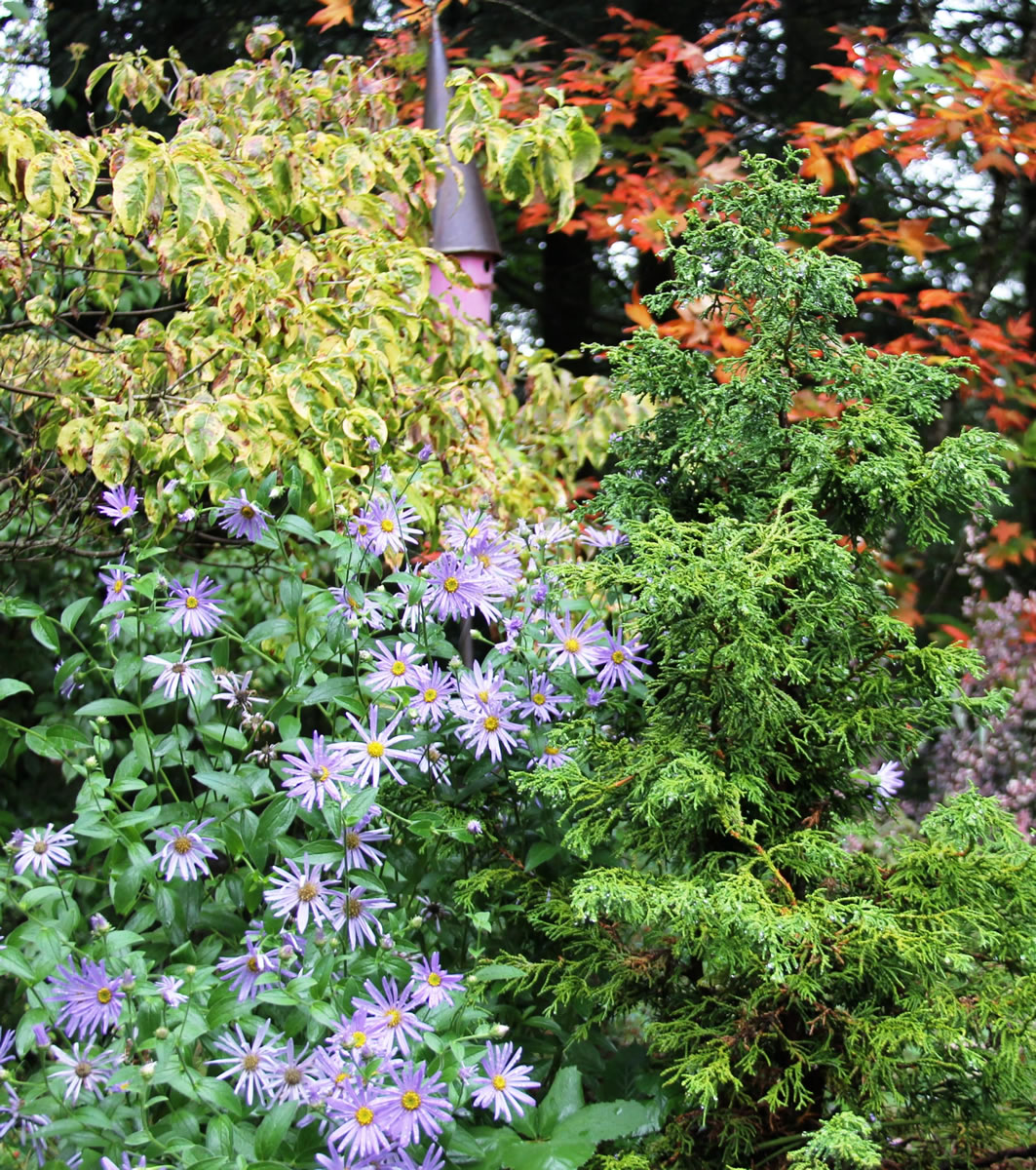Autumn introduces the grand finale in a succession of seasonal floral performances in the Northwest garden. For the gardener who collects plants with an eye on seasonal interest, the next three months offer the perfect opportunity to add the unique spice of autumn to your garden. The number of trees, shrubs and perennials that shine from September to November can be a major challenge. We want this extra season of plant interest but most of us have to fit a selection of fall plants into an already abundant garden.
Asters and chrysanthemums begin to bloom now and continue through the onset of winter frost. If you don’t already have an assortment of these plants in your garden, now is the time of year to decide on color, flower form and size of plant. Choose plants from a nursery with a wide selection of varieties. Before you buy, take the time to consider your own garden’s color palette. At the nursery, mix and match an assortment of plants to see which ones will fit into your garden scheme.
Be aware that many North American asters underwent a botanical name change from Asteraceae to Symphyotrichum in the 1990s. This happens every few years in the botanical world after molecular research convinces the experts that a species fits better in a different but related genus. Fortunately for us mere mortals, the name aster, from the Greek word for “star,” is still recognized as the plant we want in our fall gardens. In other words, an aster is still an aster by any other name.
All asters are dependable late-season perennials with showy flowers that provide a mass of color for the late summer and fall garden. They come in brilliant hues in a full range of colors including blue, purple, red and pink. They are great for cutting and for use in indoor bouquets. The au
tumn aster also grows well in containers and rock gardens as long as they have good drainage during the rainy season. Cut flower heads back after bloom for repeat flowering.
The garden chrysanthemum is another garden favorite with masses of flowers that come in a mix of forms and colors. The group of shasta daisies that include “Clara Curtis” and “Emperor of China” are free blooming and bear large flowers on long stems. They look best in masses of single colors in beds and borders. Garden mums are also perfect accent plants for containers. If you pinch them back throughout the summer they will have a longer, sturdier fall flower display.
Bulb power
In a month or two, we will begin to plant tulip and daffodil bulbs for next spring. Many gardeners are surprised to discover another group of bulbs that will produce rich, strong flower color within a few weeks of planting in fall. Colchicums and fall-blooming crocuses are similar in form, but quite different in stature. Neither are as well known or widely planted as tulips and daffodils, yet these bulbs are easy to grow in the Northwest garden.
Colchicum are unusual bulbs with vase-shaped, amethyst flowers that emerge leafless in September or October. The broad, shiny foliage actually appears early in spring and dies down in early summer, months before the flowers bloom. The blossoms are born in profusion, expanding ever larger from year to year. Colchicums are deer- and vole-resistant, so they are rarely bothered once established.
Fall-blooming crocuses are more petite, similar in size to the crocuses that bloom in spring. Crocus sativus is the most popular form with delicate, violet-purple flowers. The orange stigmas of this plant are the source of the rare spice, saffron. Plant a clutch of bulbs in front of leggy shrubs or in a bed of low groundcover such as ajuga or wild strawberry.
As flower production wanes, we focus on adding plants with vibrant fall leaf color, plant silhouette and berry production. As we approach the leafless months of winter, it’s often the plants we choose in fall that fill the dead zones in every garden between November and February. Raise your eye from the foundation plantings to the horizon of large-scale garden plantings of trees and shrubs, both deciduous and evergreen.
I can’t help feeling that there is always more left out of a Northwest garden plant list than included. If you happen to be one of the blessed few with enough space, time and hired help to put everything you want into your garden, limiting your plant palette is not necessary. For the rest of us, making sound plant choices that emphasize seasonal plant interest while enhancing our living space may be the key to a satisfying garden.



